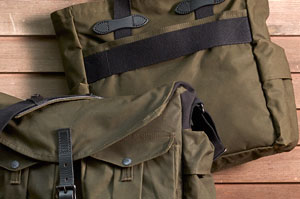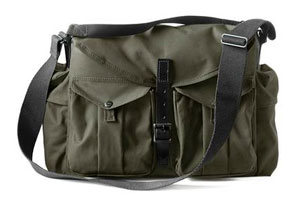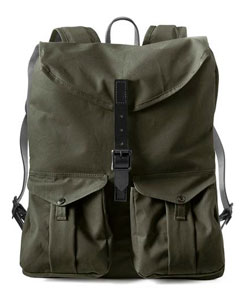Magnum photographers Steve McCurry and David Alan Harvey are on a quest to solve a fundamental functionality roadblock in the world of professional photography. One thing they never want to worry about is whether their equipment is protected and accessible at all times, reports Time magazine. “A big part of what we do is cart our stuff around,” McCurry says. “So that was the exercise: what’s the easiest, most logical, most intelligent way to get around with your equipment?”

For McCurry, the mission translated into a small line of custom-made camera bags he felt could help photographers (literally) get a handle on their gear and develop a practical shooting routine in any scenario. Well what’s better than a camera bag designed by photographers for photographers. For McCurry a good camera bag is about necessities, not accessories:
Functionality is more important than style. Organization is so important, especially in photography. You really can’t underestimate it. You need a system that’s second nature, like a reflex, so you’re thinking about the picture or the situation and not the equipment. You want your full concentration on the work, not fumbling around for things. That would be counterproductive.

I’m a one-camera, one-lens kind of guy, I always have been, so I really took this down to the bare bones. There’s hardly anything to it, in one sense. Photographers tend to think they need a lot more stuff in their bags then they actually do. They’re imagining pockets and padding and all that. I didn’t want any bells and whistles on this, because every extra zipper you add, adds more weight. You may not think that makes a difference, but when you’ve been on your feet all day walking around Rome or New York or wherever, you’ll notice that weight at the end of the day.
Now what line of camera bags they’re talking about? The one designed with Filson, designing bags not only built to last but made to look so unassuming that it’d be easy to mistake them for military surplus. McCurry:

I’m not trying to make a fashion statement. The last thing you want is a bag that says “I’m a photographer.” I want to be the guy that’s invisible and can come in with stealth. I didn’t want it to look like a designer bag or something that clearly says there’s something important in it.
Ironically, the tradeoff for that kind of high quality camouflage doesn’t come cheap. Well it’s a designer bag, costing from $245 to $425 each. Both Harvey and McCurry think that’s a fair price to pay considering it’s a vehicle for the often very expensive tools of a photographer’s trade. This new line of Filson camera bags, they say, is as much about style as an extension of an organized, efficient workflow.
They made this stuff to actually use it, says Harvey. “McCurry and I are far from models. We’re out there for real.”
As you’d expect from a company that launched in 1897 to supply “pioneer Alaska clothing” and blankets to the Klondike gold rush, it’s a particularly robust response to a suitably 21st century problem. As is the association itself: an example of co-branding that, for once, doesn’t so much scream “commercial synergies” as ask what each might do for the other.
The Filson Magnum collection launches May 1 and will be available online and through select retail stores in June and July.
BTW, check out some of the nice Filson quality bags available on eBay.


